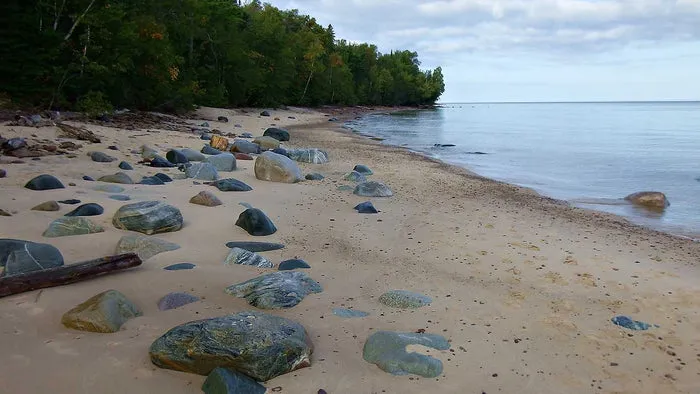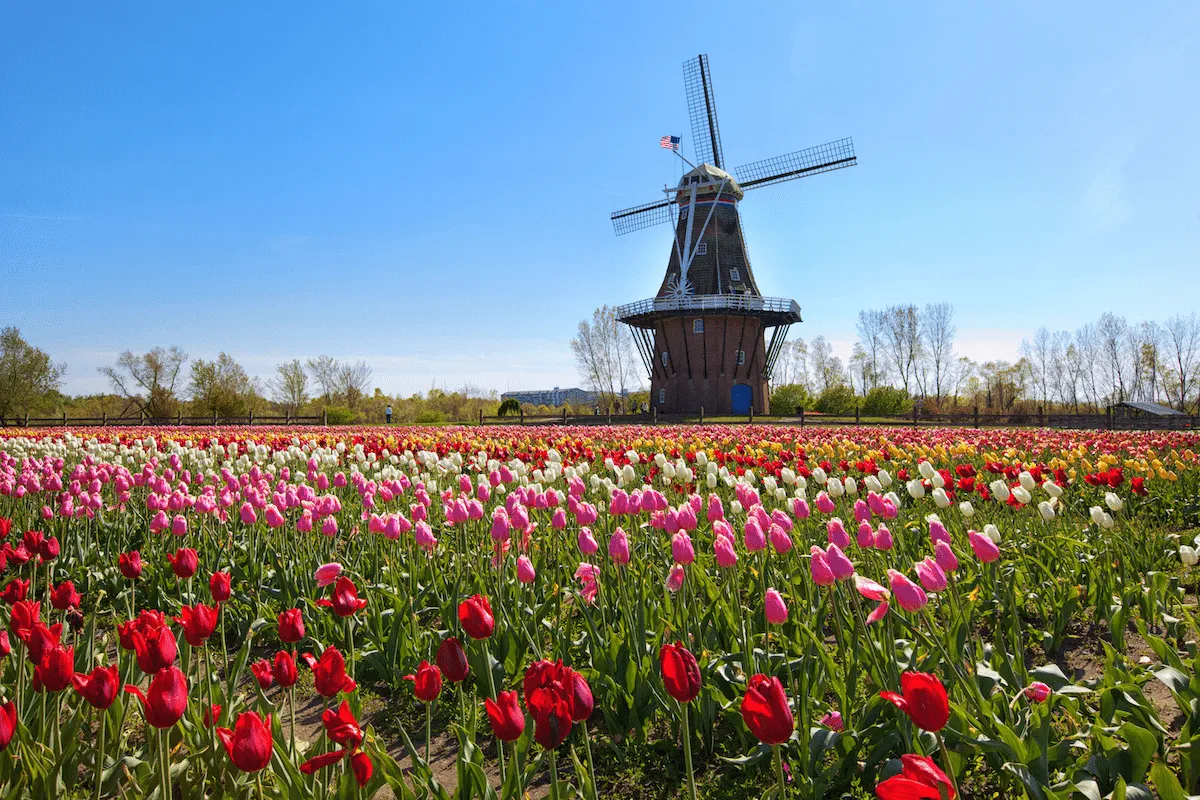Michigan, often hailed as ‘The Great Lakes State,’ holds a secret treasure trove for avid backpackers. While the rugged beauty of the Upper Peninsula is legendary, the entire state, or ‘the Mitten’ as it’s affectionately known, boasts an incredible network of paths. With over half its land covered in forests and thousands of miles of trails, finding the best backpacking trails in michigan offers adventures for every skill level. Whether you seek challenging terrain, stunning coastal views, or deep forest solitude, Michigan’s diverse landscapes provide the perfect backdrop for your next outdoor escape. Understanding the varied terrain and remarkable places to visit in michigan is the first step in planning your memorable journey.
From challenging dune treks along Lake Michigan to multi-day island expeditions on Lake Superior, these trails showcase the unique character of Michigan’s wilderness. Let’s delve into some of the most exceptional routes that await exploration, promising not just hikes, but immersive experiences in the heart of the Great Lakes region.
Pictured Rocks Lakeshore Trail
The Pictured Rocks National Lakeshore on Lake Superior is arguably one of Michigan’s most iconic natural wonders, and its lakeshore trail offers backpackers unparalleled views of towering sandstone cliffs, colorful rock formations, and vast stretches of sandy beaches. This 42-mile point-to-point section of the North Country Trail might seem long, but the elevation changes are generally moderate, making it accessible for many.
Along the way, you’ll encounter dramatic waterfalls cascading over cliffs, intriguing sand dunes, and historical landmarks like the Au Sable Light Station. Camping here is a structured experience with designated backcountry sites requiring reservations, ensuring minimal impact on this fragile environment. While beach camping isn’t permitted directly on the sand, the proximity of the campsites still allows for the soothing sounds of Lake Superior waves to lull you to sleep.
 Pictured Rocks Lakeshore Trail scenic cliffs
Pictured Rocks Lakeshore Trail scenic cliffs
Nordhouse Dunes Wilderness
For a unique challenge in the Lower Peninsula, the Nordhouse Dunes Wilderness offers an unforgettable backpacking experience. This area juts out into Lake Michigan, providing stunning coastal vistas interspersed with rolling sand dunes. The primary loop is around 13 miles, but don’t underestimate the difficulty – hiking through soft sand, especially with a pack, can be quite the workout, adding significant challenge despite the relatively short distance.
Navigation skills are crucial here, as the trails can be less defined within the dune system. While there are established campsites, dispersed camping is allowed further inland, away from water bodies and primary trails, offering a true wilderness feel. The reward is the breathtaking beauty of the dunes and the vast expanse of Lake Michigan.
Jordan Valley Pathway
Stepping away from the Great Lakes shores, the Jordan Valley Pathway in Mackinaw State Forest offers a different kind of Michigan beauty. This approximately 18-mile loop trail winds through varied inland terrain, providing a peaceful and immersive forest experience. You won’t find expansive lake views, but the pathway compensates with charming boggy areas traversed by boardwalks and bridges, lush mossy understories, and quiet overlooks of the Jordan River and the surrounding rolling countryside.
The trail is particularly vibrant in the spring with diverse plant life coming alive and spectacular in the fall when the mixed forest explodes in color. While not overly strenuous, there are enough ups and downs as the trail dips in and out of valleys to keep things interesting.
Isle Royale National Park
Embarking on a backpacking trip to Isle Royale National Park is an adventure in itself, requiring a ferry or seaplane journey across Lake Superior to reach this remote island wilderness. Extending about 46 miles, the main trails here can take anywhere from 3 to 8 days to complete, offering a true escape from civilization. Solitude is a hallmark of Isle Royale, where you’ll find yourself surrounded by the immense beauty of Lake Superior, tranquil interior forests, and numerous inland lakes.
It’s also a place where wildlife sightings, particularly moose and wolves (though the latter are more elusive), are a real possibility, adding an element of wild wonder to your trek. Planning logistics for getting to and from the island is a crucial first step in experiencing one of the most unique best backpacking trails in michigan.
 Moose near a lake on Isle Royale National Park trail
Moose near a lake on Isle Royale National Park trail
Waterloo-Pinckney Trail
Conveniently located in southeastern Michigan, the Waterloo-Pinckney Trail offers a lengthy backpacking opportunity closer to urban centers. This point-to-point trail stretches for 34 miles through the Waterloo and Pinckney State Recreation Areas. The route meanders through rolling hills, past numerous marshes and kettle lakes, providing plenty of water sources (treat all water!). Sections of meadow walks offer a pleasant change of scenery from the predominantly forested path.
A unique geological feature of the trail is the presence of eskers – long, winding ridges of stratified sand and gravel deposited by glacial meltwater streams. Dispersed camping is not permitted along this trail, but several established campgrounds are available. Be aware that some sections of the trail are shared with cyclists and horseback riders.
South Manitou Island
Another incredible island backpacking experience awaits on South Manitou Island, part of the stunning Sleeping Bear Dunes National Lakeshore. Like Isle Royale, access is via ferry, and a backcountry permit is required before you set out. The island offers a network of trails forming roughly a 10-mile loop, making it a great option for backpackers of various experience levels seeking a shorter trip with diverse sights.

The island features towering sand dunes (including a challenging climb to the top for panoramic views), a historic lighthouse, beautiful Lake Michigan shoreline, and even remnants of shipwrecks visible in the clear water near the shore. Designated individual and group campsites are available, but remember to pack out everything and be prepared to gather downed wood for fires only in designated pits.
Little Carp River Trail (Porcupine Mountains)
Tucked away in the remote western Upper Peninsula, the Porcupine Mountains Wilderness State Park is a true gem, and the Little Carp River Trail is a highlight. This roughly 12-mile out-and-back trail is well-marked and follows the picturesque Little Carp River for much of its length.
You’ll navigate a few river crossings, encounter rocky rapids, small waterfalls, and sections of boardwalks built over the water. The surrounding forest is lush, with dense fern undergrowth and impressive old-growth trees. A short spur trail leads to the Lake Superior shoreline, offering potential camping options there as well. The trail provides a sense of blissful isolation, with several backcountry campsites available along the river, ensuring you’re never too far from the soothing sounds of flowing water.
Manistee River Trail and North Country Loop
It’s nearly impossible to talk about backpacking in Michigan without mentioning the North Country Trail, and the loop combining the Manistee River Trail and a section of the North Country Trail is a popular choice, especially for a weekend trip. This manageable 20-mile loop in the Lower Peninsula’s Huron-Manistee National Forest offers diverse scenery along the Big Manistee River.
Highlights include crossing the state’s longest suspension bridge (the pedestrian-only Manistee River Bridge), visiting a small waterfall, viewing the Hodenpyl Dam, and enjoying numerous overlooks offering expansive views of the river and the Udell Hills. Several access points and traditional campgrounds at two trailheads make planning and logistics relatively straightforward. For a deeper dive into exploring this remarkable area, consider detailed guides on backpacking in manistee national forest.
Planning Your Michigan Backpacking Trip
Preparing adequately is key to a successful and enjoyable backpacking adventure in Michigan. The state’s diverse climate means conditions can change rapidly, especially near the Great Lakes. Researching the specific trail you plan to hike is essential for understanding terrain, water availability, and regulations.
Permits and Regulations
Many of the most popular trails, particularly in state parks and national lakeshores, require backcountry permits and often campsite reservations, especially during peak season (typically late spring through fall). Always check the specific requirements for your chosen location before you go. Adhering to Leave No Trace principles is paramount to preserving the beauty of these natural areas for future generations.
Best Time to Hike
The prime season for backpacking in Michigan is generally late spring through fall. Spring offers wildflowers and fewer bugs initially, though conditions can be wet. Summer is popular but can be hot and buggy (bring insect repellent!). Fall brings spectacular foliage and cooler temperatures, often considered ideal by many backpackers. Winter backpacking is possible for experienced individuals with proper gear and training, offering solitude in a snow-covered landscape.
Wildlife Encounters
Michigan is home to a variety of wildlife, including deer, black bears (more common in the UP but present in some LP areas), coyotes, and smaller mammals. On Isle Royale, you might encounter moose. Take precautions like storing food properly in bear-resistant containers or hanging it away from your tent. Be aware of your surroundings and know how to react if you encounter wildlife.
Frequently Asked Questions About Backpacking in Michigan
Exploring Michigan’s wilderness brings up some common questions for those planning a trip. Here are answers to a few:
What is the best time of year to backpack in Michigan?
Late spring (May-June) and fall (September-October) are often considered ideal due to moderate temperatures and fewer insects. Summer (July-August) is popular but can be warm and buggy.
Do I need permits to backpack in Michigan?
For most designated backcountry trails in state parks, national lakeshores, and national forests, yes, you will need a permit, and often a reservation for campsites, especially during busy seasons. Check the specific park or forest regulations.
Are dogs allowed on Michigan’s backpacking trails?
Rules vary greatly by location. National parks like Isle Royale and Pictured Rocks National Lakeshore generally do not allow pets on trails or in the backcountry. Many state parks and national forests do allow dogs but require them to be on a leash. Always check the specific regulations for your destination.
Conclusion
From the dramatic cliffs of the Upper Peninsula to the serene inland forests of the Lower Peninsula, the best backpacking trails in michigan offer solitude, challenge, and breathtaking beauty. Each trail presents a unique opportunity to connect with nature, test your limits, and experience the diverse landscapes shaped by glaciers and bordered by mighty Great Lakes. Lace up your boots and prepare to discover why the Great Lakes State is a true gem for backpackers seeking unforgettable journeys. Beyond these trails, Michigan offers countless adventures, solidifying its reputation among the best places to visit in michigan for outdoor enthusiasts.
